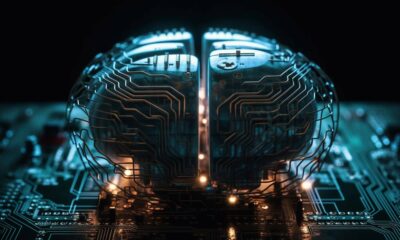TECHNOLOGY
How Machine Learning Can Prevent Train Delays

The use of machine learning can help anticipate train delays, detect early signs of failure and plan routes based on changing needs.
Machine learning can improve rail travel both in the long and the short-term by minimizing train delays and ensuring high service quality.
Train delays can be really frustrating and disruptive, especially if you frequently commute by train for work. In addition to the trains being late, you might end up feeling so annoyed, you’re almost sure the railway operator has something personal against you. But the fact is, delayed trains affect millions of people all over the world, and there is very little operators can do to minimize such delays. This is because rail delays are caused by numerous factors that are interrelated, making it hard to assess the effects and devise solutions. However, using artificial intelligence applications, powered by machine learning, can help rail operators improve services by enabling intelligent decision-making and prompt action for minimizing train delays.
How Machine Learning Can Prevent Train Delays
Train delays are caused by multiple factors, including infrastructural and mechanical failures, unfavorable weather, delays caused by passengers, and suboptimal scheduling. Using machine learning, rail operators can optimize and improve rail networks and minimize train delays.
1. Accurately Predicting Train Delays
The already frustrating issue of delayed trains is further aggravated by the inaccuracy in the rescheduled time of arrival. With multiple trains sharing the same routes, one late train can delay all the trains scheduled after it. Depending on the number and frequency of trains passing through a route, delayed trains can have extensive ramifications, causing inconvenience to thousands or even millions of passengers. Machine learning is being used to accurately estimate how late a train will arrive at a station. To accurately predict the ETA, large volumes of historical data, along with the real-time positional and performance data, is constantly analyzed for every train. This allows operators to control and conduct rail traffic in a way that minimizes the effect of one delayed train on the schedules of others. This will ensure the overall system adheres to the schedule even if some trains, due to unforeseen causes, get delayed.
2. Minimizing Risks & Ensuring Timely Maintenance
A failure or defect in either the locomotive or the track in a railway network can lead to a complete halt of operations on a given route. This causes long delays with the estimated time for restoration contingent on various factors. The use of machine learning in the automotive industry has already proven its effectiveness in performing predictive maintenance, which can be applied to locomotives to eliminate delays due to breakdowns. Machine learning can potentially eliminate mechanical breakdowns by constantly monitoring data points that can indicate any impending breakdowns. A proactive approach towards the maintenance of trains and tracks minimizes the need for urgent repairs.
3. Better Management of Train Schedules
The massive amount of real-time data collected and analyzed through machine learning can not only improve the current railway operations but can also assist in making long-term improvements like laying new lines and planning new routes. Insights gained through machine learning enable railway operators and authorities to plan and optimize the use of the available trains and the related infrastructure. Suboptimal routes can be re-planned, or new routes can be designed, to ensure. This can be achieved using reinforcement learning, a type of machine learning that can determine the most optimal solution to problems by evaluating the results of previous actions. Optimizing routes and schedules can help in minimizing train delays due to congestion of passengers and uneven rail traffic.
The use of data analytics to make trains run on time is not a radically new or futuristic concept but is something that is already happening. In addition to minimizing train delays, analytics are also enabling rail operators to provide better customer experiences like real-time tracking of trains and gathering feedback through mobile applications. With the help of machine learning and big data, train journeys will become much more convenient.
Source link




















You must be logged in to post a comment Login